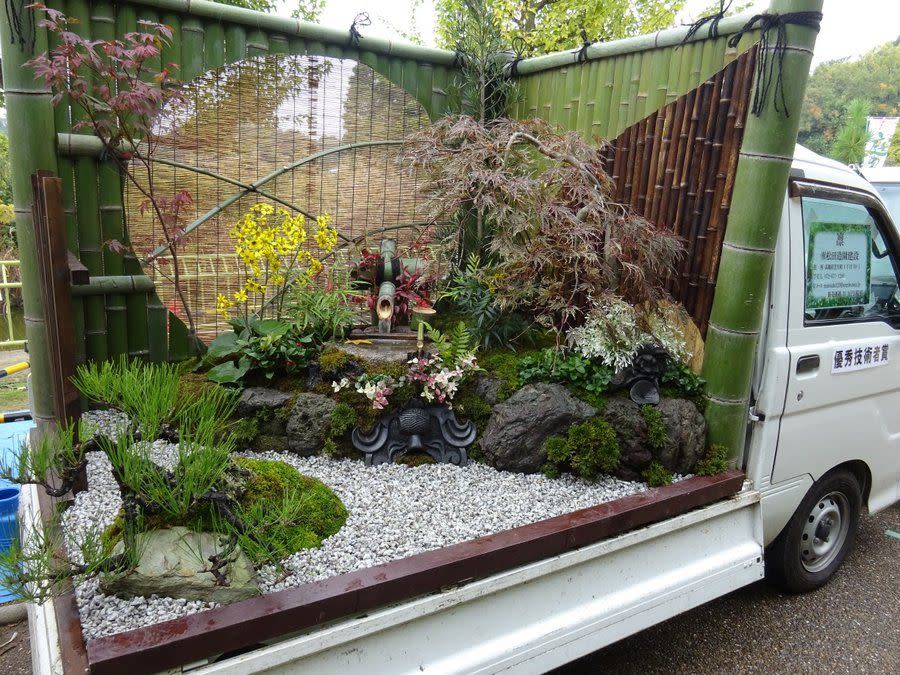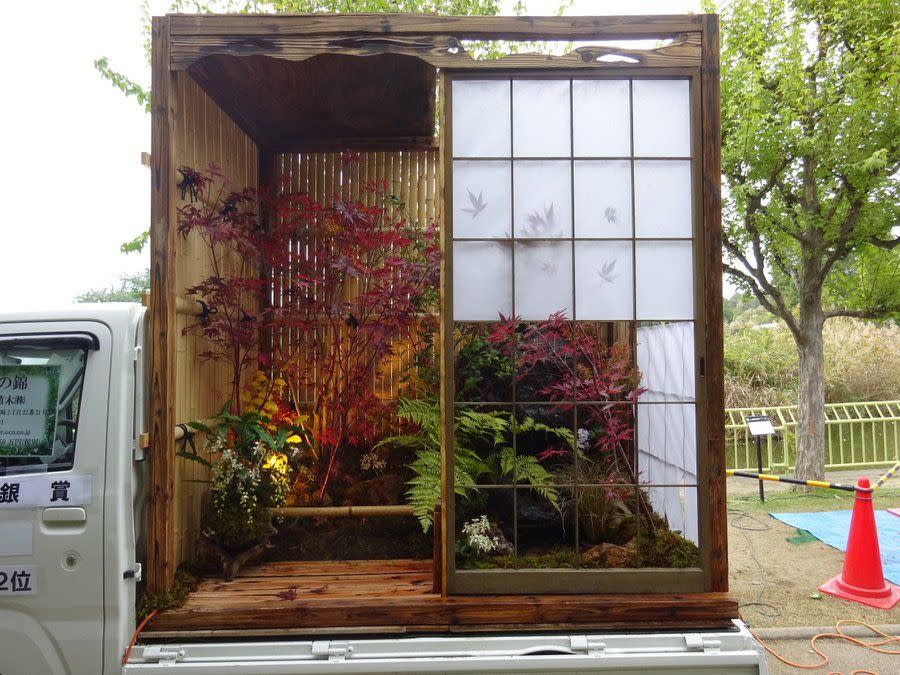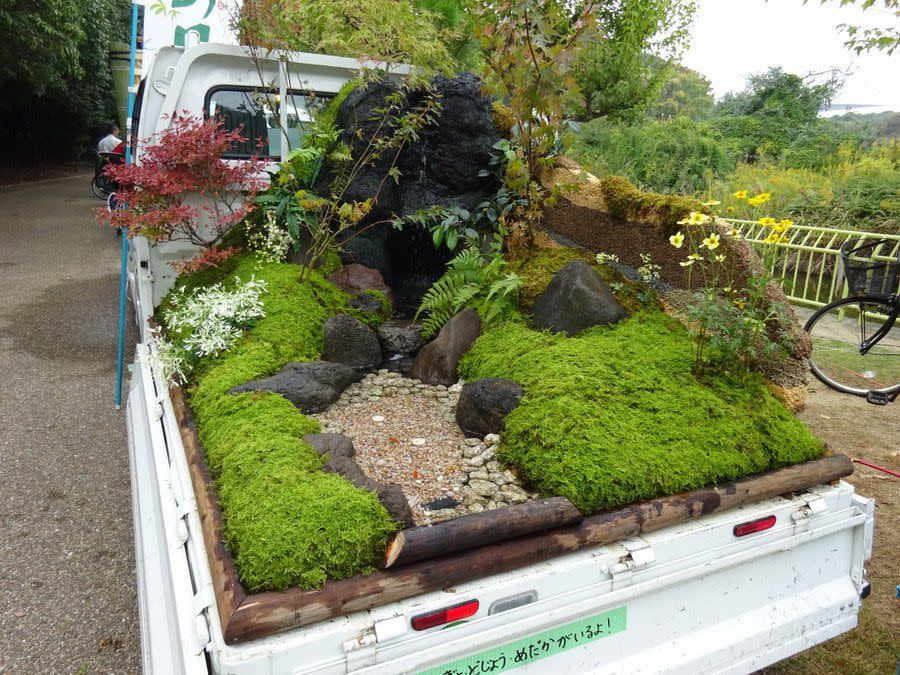Japanese Landscapers Turn Kei Trucks into Tiny Gardens

All over Japan, tiny trucks zip hither and thither through city and country, hauling everything from little pallets of lumber to construction tools. If it wasn't a real phenomenon, it might well be a Studio Ghibli animated feature because all these kei-tora are as adorable as Corgis with backpacks. They work hard, they're nimble enough to squeeze down the back lanes of Tokyo and Kyoto, and if you're a gardener or landscaper in Japan, a kei truck is an absolutely indispensable tool. Kei trucks are such a sensible choice for light hauling duties that American customers are paying premium prices to import their own tiny trucks. Back in Japan, where kei trucks are easy to come by, some landscape artists celebrate their usefulness in the garden by turning the wee pickups into gardens themselves.

Welcome to the world of kei-tora gardening. It's not quite bonsai, the art of growing tiny-yet-ancient trees in small containers, but it does require creating a landscape in a limited space: the 6'6" by 4'6" bed of a tiny kei truck.
Japan's cities are often built up areas where people living in apartments don't have much access to their own gardens. Thus, the ability to build a whole world inside the bed of a Pokemon-sized truck is a signature way for a gardener to show off their skill.
Kei-tora were created in Japan in the rebuilding period immediately following WWII. First proposed as a class in 1949, the first of them were basically three-wheeled motorcycles. By law, modern kei trucks have a maximum length of just over 11 feet, a max width under five feet, and a maximum engine displacement of 660cc. Despite these restrictions, the carrying capacity is a fairly impressive 770 pounds, a little over half that of a Ford Maverick. They're ideal for landscaping and for showing off landscaping skills.

During a 2024 show held in Toyama, a city on the north coast of Japan's main island, some 13 landscape companies converged for the annual competition. Officially sanctioned by the Japan Federation of Landscape Contractors, regional contests like these started in Toyama in 2011 and can now be found as annual events in multiple Japanese prefectures: Akita, Miyago, Ibaraki, Miyazaki, and Osaka. As the Toyama event is now in its 13th year, it hosted 13 entries.
The rules, such as they are, are fairly loose, the better to encourage creativity. Some kei truck gardens shrink down traditional forms, while others incorporate water features, fish, and perhaps even a tiny bench to sit on. Toyama is a smaller city, but the event saw thousands of attendees voting on which truck-garden was best.

At Osaka's kei-tora gardening contest (held April 27–28) 16 participants took part in the contest, including a horticultural school. The trucks were prepared outside of the show, then driven in and parked, with competitors given a few hours to finalize the display before judging began.
Yomiuri Shimbum, deputy director general of the Kansai bloc of the Japan Federation of Landscape Contractors said, "The aim of the Kei-tora Garden Show is to make young professional gardeners brush up their skills, have them compete in degree of perfection and display the attractiveness of gardening to a wide range of people. As the garden landscapes are on the beds of light trucks instead of the ground, visitors find it easier to see."
Along with showcasing the talents of the various participants, the idea is to encourage home gardeners to experiment with their own small plots.

Kei trucks have their fans on this side of the Pacific as well, though they are not really a practical replacement for full-size trucks in heavier work. However, when Datsun first arrived in California in the late 1950s, it was Japanese gardeners buying little Datsun pickups that helped the company get its start. Likewise, imported JDM kei trucks are popular in many cities in North America for light landscaping work, whether professional or DIY.
Any landscaper over here wanting to show off their abilities could do worse than to copy this Japanese tradition and enter a kei-tora garden in a local gardening show. Or perhaps it'll just remain a Japan-only phenomenon, something to add to your list of reasons to visit there.
You Might Also Like

 Yahoo Autos
Yahoo Autos 